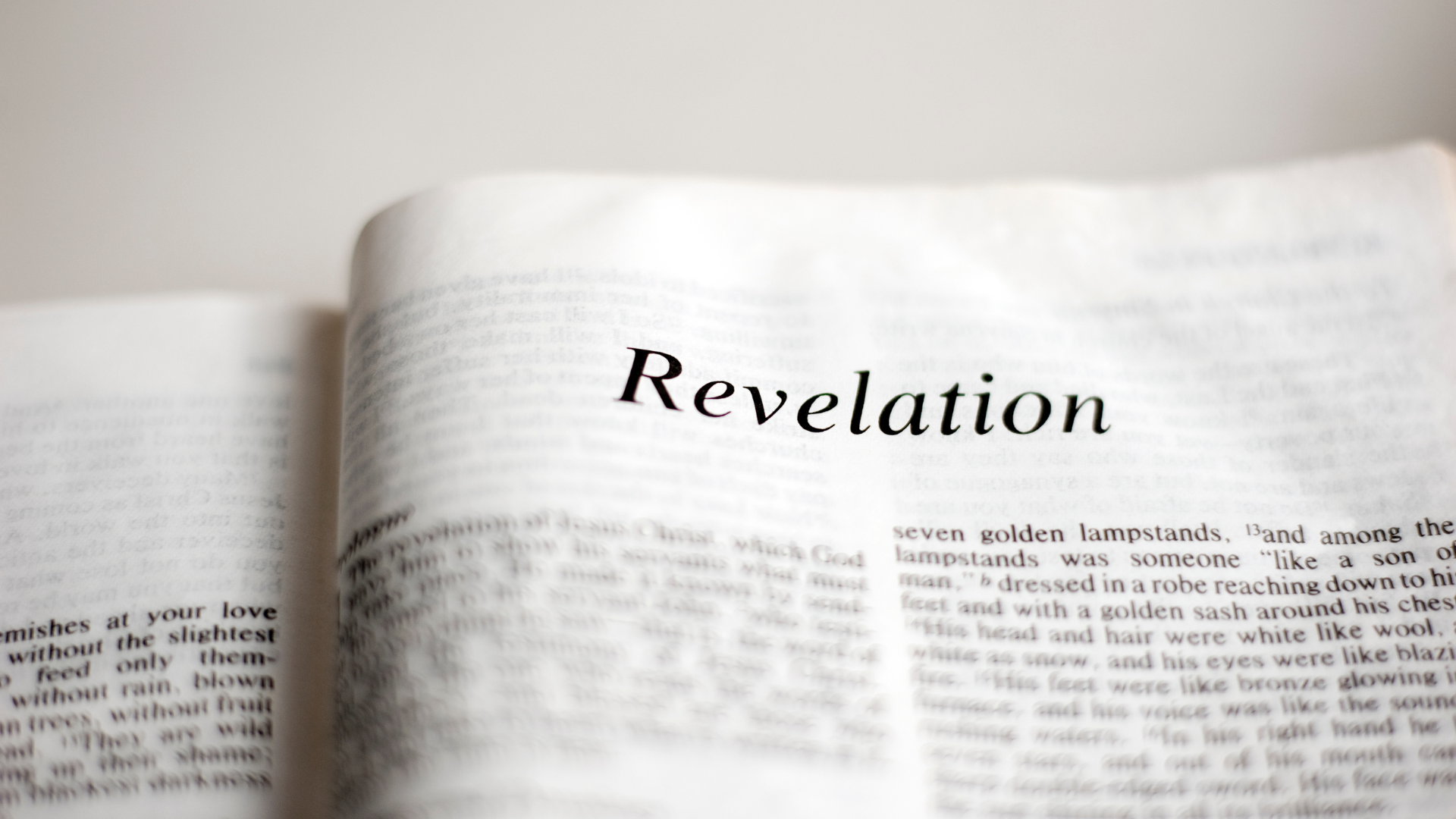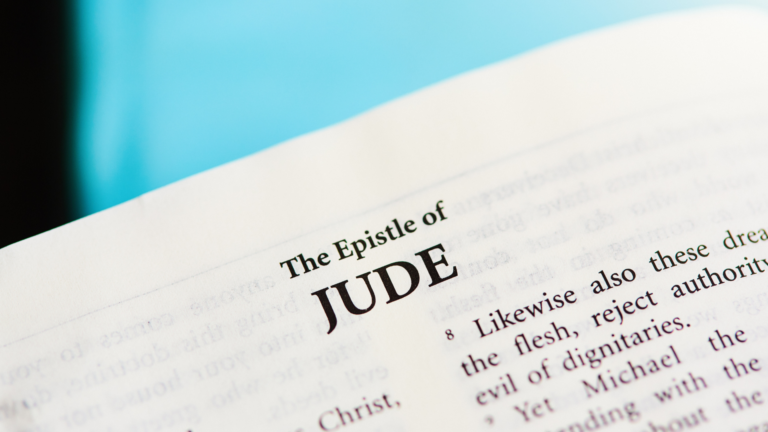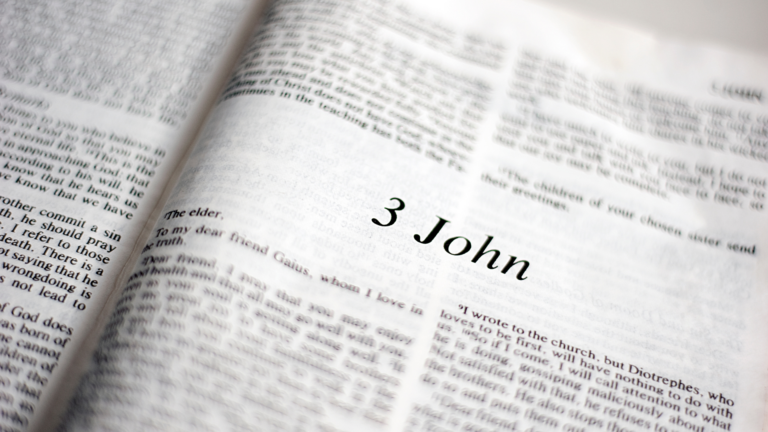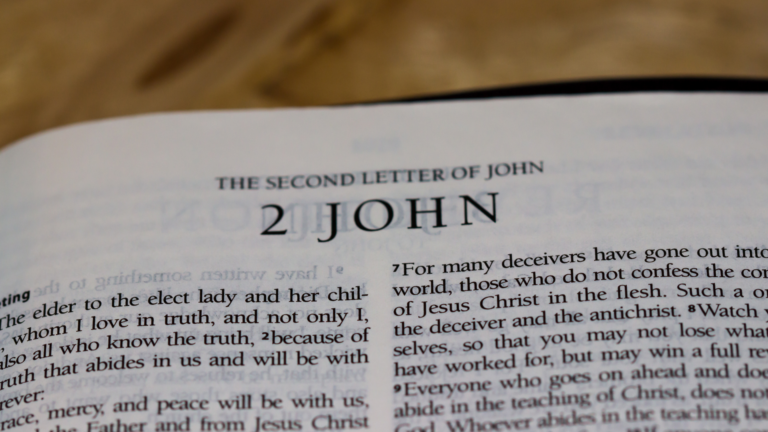Have you ever wondered about the mysterious prophecies in the Book of Revelation? Delve into the depths of this captivating Scripture to unravel profound messages. In this Bible study guide, l uncover the symbolism and decode the apocalyptic visions in Revelation to help you understand the divine revelations.
Revelation Bible study guide: Brief overview
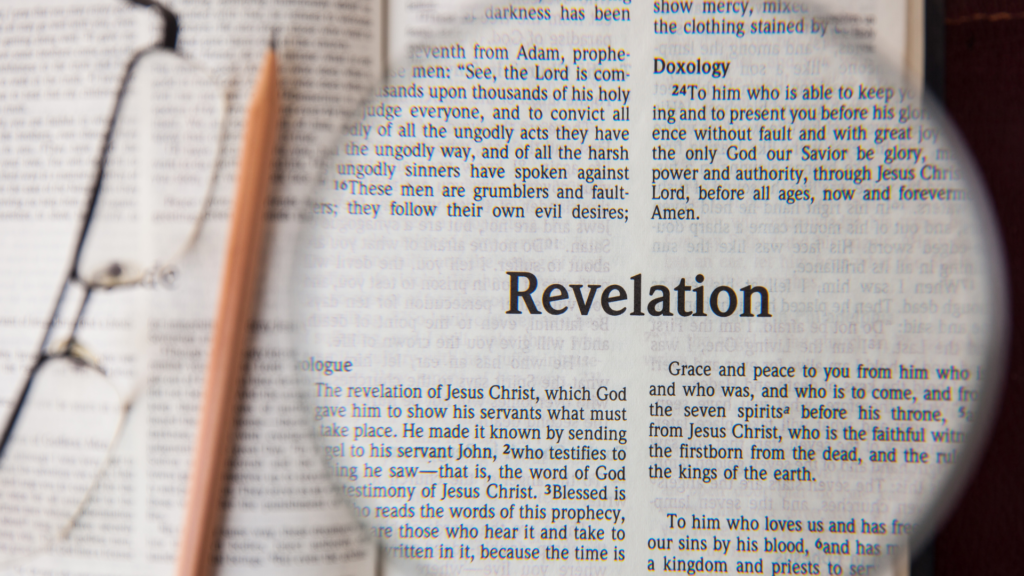
The Book of Revelation, also known as the Apocalypse, is the last book in the New Testament. It is attributed to the apostle John and is filled with vivid imagery, symbolism, and prophetic visions.
Revelation is unique in its depiction of the end times, offering a glimpse into the ultimate victory of God over evil and the establishment of His eternal Kingdom. Here’s a summary of Revelation:
| Aspect | Details |
|---|---|
| Author | The apostle John. |
| Date of writing | Approximately AD 95-96. |
| Purpose | To reveal Jesus Christ and His ultimate victory over evil. |
| Recipients | The seven churches in Asia Minor: Ephesus, Smyrna, Pergamum, Thyatira, Sardis, Philadelphia, and Laodicea. |
| Historical context | Written during a period of intense persecution of Christians under the Roman Empire. |
| Key themes | Sovereignty of God, victory of Christ, eschatological themes, nature of evil, and triumph of God’s Kingdom. |
| Notable verses | Revelation 1:8, 3:20, 21:4, 22:20 |
| Application for today | The book offers hope and encouragement to believers facing persecution and trials. It also serves as a reminder of the ultimate victory of Christ and the establishment of God’s eternal Kingdom. |
Importance of studying Revelation

Studying Revelation is crucial for Christians seeking a deeper understanding of God’s plan for the world and their place within it.
The book provides insights into the nature of evil, God’s sovereignty, and the triumph of Christ.
Revelation offers hope and encouragement to believers facing persecution and trials, reminding them of God’s faithfulness and promise of redemption.
Purpose of the Revelation Bible study guide
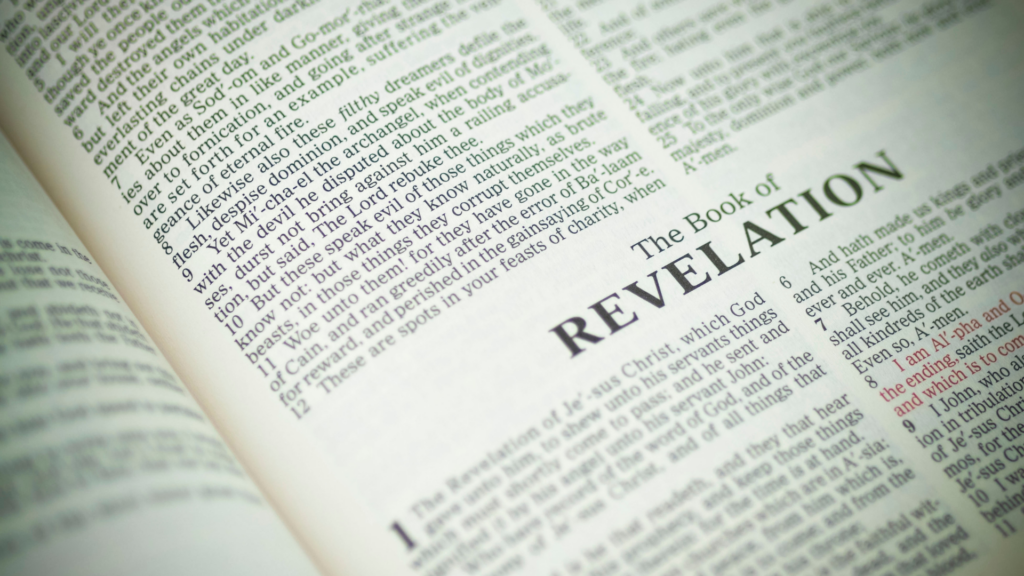
This guide aims to help individuals and groups explore the rich themes, symbolism, and teachings in Revelation.
By providing a structured approach to studying the text, the Revelation Bible study guide seeks to empower you to uncover the timeless truths contained in Revelation and apply them to your life.
Whether you’re a seasoned believer or new to the study of Revelation, this guide offers valuable insights and resources for deepening your understanding of this profound book.
Revelation Bible study guide: Background information
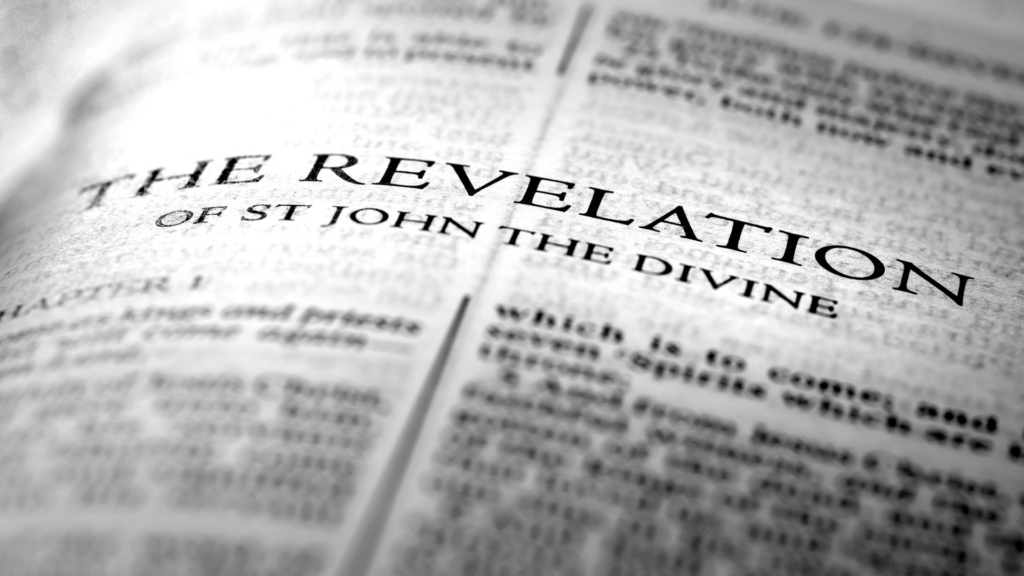
The Book of Revelation offers a vivid depiction of the ultimate triumph of good over evil, the final judgment, and the establishment of a new heaven and earth. To fully grasp its message, it’s crucial to delve into its background.
Historical context
The Book of Revelation was written during a period of intense persecution for early Christians, most likely under the reign of the Roman Emperor Domitian (81-96 AD). The Roman Empire, at this time, was marked by widespread oppression and brutality, especially toward those who refused to participate in the imperial cult, which demanded worship of the emperor as a god.
Christians, who exclusively worshiped Jesus Christ, were often targets of persecution, facing imprisonment, torture, and even death for their beliefs.
The early Christian community, particularly those in Asia Minor (modern-day Turkey), where the seven churches addressed in Revelation were located, was struggling with external pressures from Roman authorities and internal challenges such as false teachings and spiritual complacency.
The apocalyptic visions in Revelation provided these believers with both a warning against compromising their faith and a message of hope in the ultimate victory of Christ.
Cultural context

Culturally, this prophetic book is steeped in the apocalyptic traditions of Jewish literature, which were familiar to its original audience. Apocalyptic writings emerged during times of crisis, offering symbolic and cryptic visions of divine intervention and the end of the current age.
These writings were meant to encourage the faithful by revealing that, despite present suffering, God would soon intervene to deliver His people and establish His Kingdom. The use of vivid imagery, symbolic numbers, and cosmic battles in Revelation reflects this tradition.
For instance, the number seven, which appears frequently throughout the text, is significant in Jewish thought, symbolizing completeness or perfection.
The depiction of the final battle between good and evil, and the subsequent establishment of a new order, would have resonated with early Christians who were familiar with similar themes in Jewish apocalyptic literature.
Authorship and date of writing

The Book of Revelation is traditionally attributed to the apostle John, who also authored the Gospel of John and the epistles of John (1 John, 2 John & 3 John). However, there has been some debate among scholars regarding the identity of the author. The book itself claims to have been written by “John,” likely the same John who was a disciple of Jesus (Revelation 1:1-2).
Other scholars suggest that the author could have been another Christian leader named John, sometimes referred to as “John of Patmos,” after the island where the book was written. The author identifies himself simply as “John” and claims to have received the visions recorded in the book while in exile on the island of Patmos (Revelation 1:9), likely due to his faith and testimony of Jesus.
The date of writing is placed around 95-96 AD, during the latter part of Domitian’s reign, when persecution of Christians was intense. This dating aligns with the internal evidence within the text, such as the references to the seven churches in Asia Minor, which reflect conditions and challenges faced by Christian communities in the late 1st century AD.
Revelation Bible study guide: Structure of the book

Understanding the structure of Revelation helps you navigate its complex narrative and thematic progression, leading to a deeper appreciation of its message.
Overview of the structure
Revelation is structured in a way that guides you through a series of visions, prophecies, and messages delivered to the apostle John.
These visions are presented in a sequence that builds upon each other, leading towards the culmination of God’s plan for humanity and creation. Here’s a summary of the events described in the Book of Revelation:
| Event | Description |
|---|---|
| Introduction (Revelation 1) | The revelation of Jesus Christ to John on the island of Patmos. |
| Letters to the seven churches (Revelation 2-3) | Ephesus, Smyrna, Pergamum, Thyatira, Sardis, Philadelphia, and Laodicea. |
| Opening of the seven seals (Revelation 6-8) | The Lamb opens the seals, unleashing the Four Horsemen of the Apocalypse, the martyrs, cosmic disturbances, and silence in heaven. |
| The seven trumpet judgments (Revelation 8-11) | Angels sound trumpets, leading to catastrophic events such as hail and fire, a burning mountain, and the woes upon humanity. |
| The woman and the dragon (Revelation 12) | The cosmic battle between the woman (representing Israel or the church) and the dragon (representing Satan), with the birth of the male child (representing Christ). |
| The beast and the false prophet (Revelation 13) | The rise of two beasts: one from the sea (representing political power) and one from the earth (representing religious deception). |
| The seven bowl judgments (Revelation 15-16) | Seven angels pour out bowls of God’s wrath, resulting in plagues upon the earth, sea, rivers, sun, and throne of the beast. |
| Fall of Babylon (Revelation 17-18) | The judgment of the great prostitute Babylon, representing spiritual corruption and worldly power. |
| The return of Christ (Revelation 19) | Jesus returns on a white horse as the conquering King to defeat the beast and false prophet, establishing His reign. |
| Millennium and final judgment (Revelation 20) | Satan is bound for a thousand years, and the saints reign with Christ. Satan is released and defeated, followed by the final judgment and the new heaven and earth. |
| New heaven and new earth (Revelation 21-22) | John sees the vision of the new Jerusalem, the dwelling place of God with His people, where there is no more sorrow, pain, or death. |
| Conclusion (Revelation 22) | Final words of encouragement and warning, including the promise of Jesus’ return and the invitation to partake in the water of life. |
The three main sections
Revelation is divided into three main sections, each serving a distinct purpose in conveying its message:
The letters to the seven churches

At the beginning of Revelation (chapters 2-3), John records seven letters addressed to specific churches in Asia Minor: Ephesus, Smyrna, Pergamum, Thyatira, Sardis, Philadelphia, and Laodicea.
These letters contain commendations, rebukes, and exhortations tailored to the spiritual conditions and challenges faced by each church.
They provide insight into the spiritual state of the early Christian communities and offer timeless lessons for believers today.
The visions of judgment and salvation
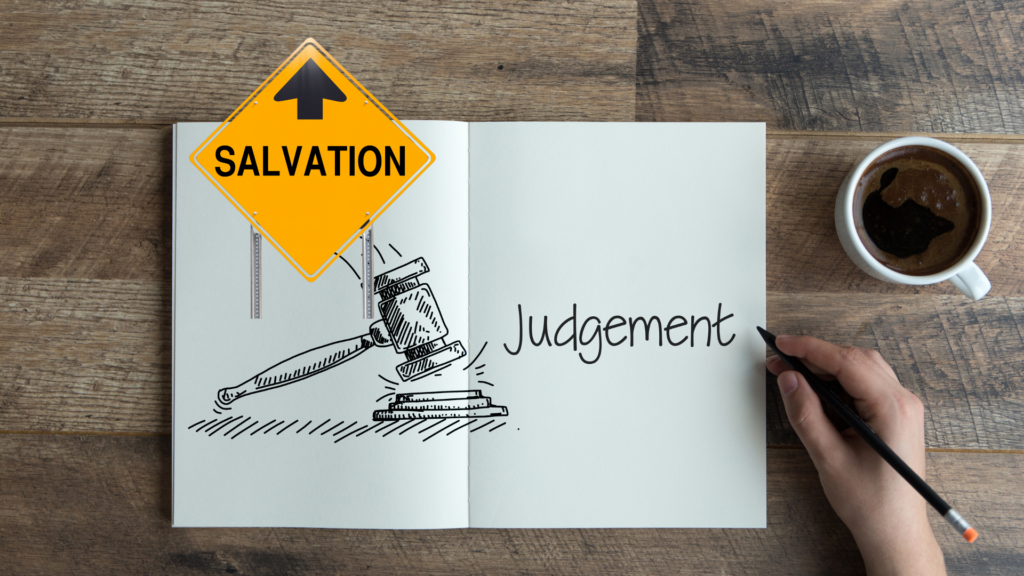
Following the letters to the churches, Revelation presents a series of visions (chapters 4-19) depicting various judgments, conflicts, and triumphs that will occur during the end times.
These visions include the opening of the seven seals, the sounding of the seven trumpets, and the pouring out of the seven bowls of God’s wrath.
Throughout these visions, John witnesses cosmic disturbances, battles between good and evil, the rise of the antichrist, and the victory of Christ over His enemies. These visions illustrate the unfolding story of God’s plan for redemption and judgment upon the world.
The consummation of God’s Kingdom

The final section of Revelation (chapters 20-22) focuses on the consummation of God’s Kingdom and the establishment of a new heaven and earth.
This section includes the defeat of satan, the final judgment of the dead, the resurrection of the righteous, and the descent of the new Jerusalem from heaven.
Revelation concludes with a vision of the eternal state, where God dwells among His people, wiping away every tear and ushering in a new era of peace and righteousness.
Literary genre

Revelation belongs to the genre of apocalyptic literature, characterized by its use of symbolic imagery, visions, and prophetic messages about the end times.
Apocalyptic literature often arose during times of crisis or persecution, seeking to provide comfort and assurance to those facing adversity.
Revelation combines elements of prophecy, apocalyptic visions, and letters to the seven churches in Asia Minor, making it a complex and multi-layered text. Understanding its literary genre is crucial for interpreting its symbolism and messages accurately.
Revelation Bible study guide: Interpreting symbolism
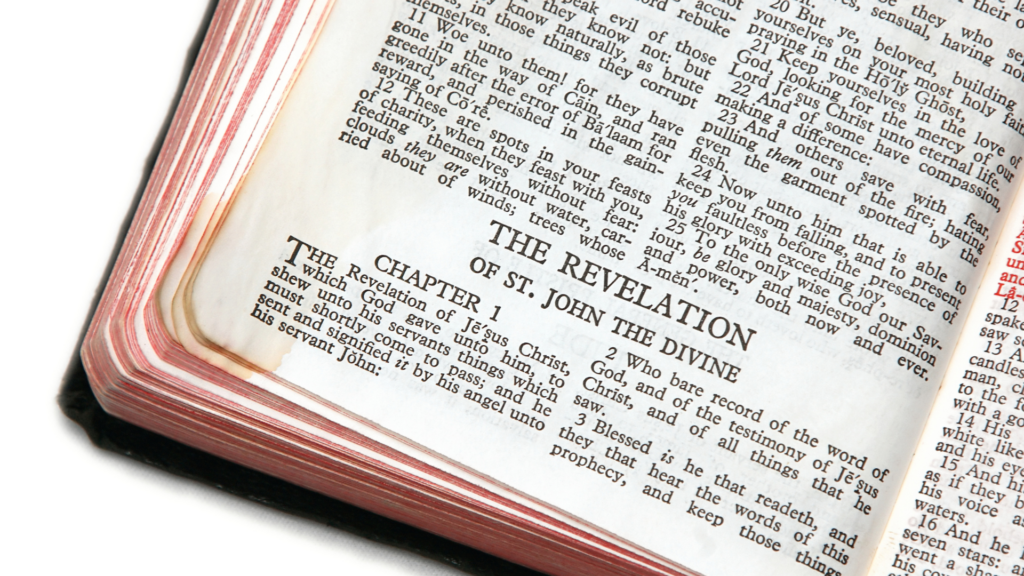
The Book of Revelation is rich in imagery and symbolism, drawing from various sources such as Old Testament prophecies, apocalyptic literature, and cultural symbols of the time.
Symbolism in Revelation
The Book of Revelation employs symbolism as a powerful literary device to convey its message about the spiritual realities and cosmic conflicts underlying the visible world.
Understanding the symbolism used is essential for grasping its deeper meaning. Symbolism conveys profound theological truths in vivid and memorable imagery.
Common symbols and their meanings
Revelation contains numerous symbols that recur throughout the text, each carrying specific meanings and significance. Some common symbols and their interpretations include:
- Seven: Completeness, perfection, or fullness.
- Lamb: The sacrificial Lamb of God, Jesus Christ.
- Dragon: Satan or the forces of evil.
- White: Purity, righteousness, victory.
- Babylon: Symbolic of worldly power, corruption, and idolatry.
- New Jerusalem: The ultimate dwelling place of God with His people, representing the culmination of God’s Kingdom.
- Number symbolism: Numbers like 666 represent imperfection or evil, and 144,000 symbolize the redeemed and sealed of God.
Approaches to interpreting symbolism
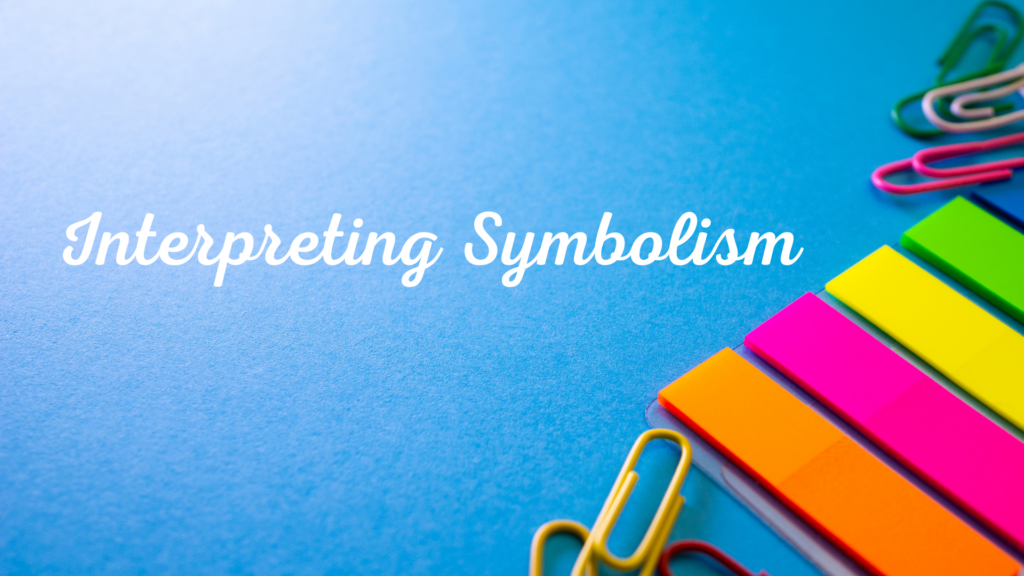
The symbolism in Revelation has been interpreted in various ways throughout history, leading to different approaches to understanding its meaning:
Historical interpretation
This approach views Revelation as primarily describing events that occurred in the past, particularly during the time of the Roman Empire.
It interprets the symbols and visions in light of historical events and figures, such as the persecution of Christians under Roman emperors.
Futurist interpretation

The futurist approach sees Revelation as describing events that are yet to occur in the future, especially during the end times.
It interprets the symbols and prophecies as predicting future events, such as the rise of the antichrist, the Great Tribulation, and the Second Coming of Christ.
Idealist Interpretation
The idealist approach views Revelation as depicting timeless spiritual truths and principles rather than specific historical or future events.
It interprets the symbols as representing abstract concepts such as the ongoing struggle between good and evil, the victory of Christ over sin and death, and the triumph of God’s Kingdom.
Preterist interpretation

The preterist approach interprets Revelation as describing events that were fulfilled in the past, particularly during the first century AD.
It sees the symbols and prophecies as referring to events such as the fall of Jerusalem in AD 70 or the persecution of Christians under Roman rule.
These different interpretive approaches offer valuable insights into the meaning of Revelation’s symbolism, each highlighting different aspects of its message and relevance for believers throughout history.
Revelation Bible study guide: Key themes

The Book of Revelation contains profound theological themes offering hope, encouragement, and assurance to believers facing trials and persecution.
The sovereignty of God
Revelation emphasizes the absolute sovereignty of God over all creation. From the opening declaration, “I am the Alpha and the Omega,” to the depiction of God seated on the throne in heavenly worship, the book exalts God as the ruler of the universe. (Revelation 1:8, 4:2-11)
The victory of Christ

Central to Revelation is the theme of Christ’s victory over sin, death, and evil. Jesus is depicted as the triumphant Lamb who conquered through His sacrificial death and resurrection.
His victory is celebrated in heavenly worship and affirmed in the defeat of satan and his forces. (Revelation 5:5-14, 12:11)
Eschatological themes

Revelation contains eschatological themes concerning the end times and the fulfillment of God’s purposes for humanity.
These themes include the final judgment, the resurrection of the dead, the renewal of all things, and the establishment of God’s eternal Kingdom. (Revelation 20:11-15, 21:1-5)
The nature of evil and the battle between good and evil

The book portrays the reality of evil and the ongoing spiritual battle between good and evil forces. The dragon, representing satan, wages war against God’s people, seeking to deceive and destroy them.
However, Christ’s victory ensures that evil will be defeated and cast into the lake of fire. (Revelation 12:7-12, 20:10)
The ultimate triumph of God’s Kingdom

Revelation culminates in the ultimate triumph of God’s Kingdom, where He will dwell with His people in a new heaven and earth.
The new Jerusalem, descending from heaven adorned as a bride, symbolizes the consummation of God’s redemptive plan and the fulfillment of His promise to dwell among His people forever. (Revelation 21:1-4)
Revelation Bible study guide: Key characters

The apocalyptic nature of Revelation introduces characters who play pivotal roles in the unfolding narrative. Understanding these characters is essential to grasp the overarching messages of this enigmatic text.
- Jesus Christ: The central figure in Revelation, Jesus Christ is depicted as the risen and glorified Lord. He reveals the future and the ultimate victory of God over evil (Revelation 1:13-16; 19:11-16).
- John the apostle: The author of Revelation, John is the recipient of the visions described in the book. He serves as the witness and scribe of the revelations given to him by Jesus Christ (Revelation 1:1, 4, 9).
- The seven churches: The seven churches of Asia Minor (Ephesus, Smyrna, Pergamum, Thyatira, Sardis, Philadelphia, Laodicea) are addressed by Jesus in the opening chapters. They symbolize various aspects of the early Christian church and its challenges (Revelation 2-3).
- The Four Horsemen: Representing the Four Horsemen of the Apocalypse, these figures appear in Revelation 6:1-8 and symbolize various forms of divine judgment and catastrophe—Conquest, War, Famine, and Death.
- The beast: Often identified with the antichrist, the beast symbolizes a powerful and oppressive political figure or system that opposes God and persecutes believers (Revelation 13).
- The false prophet: This character acts on behalf of the beast, performing signs and deceiving people into worshiping the beast and accepting its mark. (Revelation 13:11-18).
- The dragon: Representing satan, the dragon is a malevolent force opposing God and His people. He is cast out of heaven and wages war against the faithful (Revelation 12:3-9).
- The Lamb: Symbolizing Jesus Christ, the Lamb is central to Revelation’s themes of redemption and victory. The Lamb is worthy to open the scroll and execute God’s judgment (Revelation 5:6-14; 7:9-17).
- The woman clothed with the sun: This symbolic figure represents Israel or the faithful community, depicted as giving birth to the Messiah and facing persecution by the dragon (Revelation 12:1-6).
- The New Jerusalem: Representing the ultimate fulfillment of God’s promise, the New Jerusalem is the holy city where God dwells with His people in the new heaven and new earth (Revelation 21:1-22:5).
Revelation Bible study guide: Key verses and their exegesis

These verses offer believers hope while challenging them to remain steadfast in their faith. As you meditate on these Scriptures, you are reminded of the hope, power, and assurance that come from a life anchored in Christ.
Revelation 1:8
This verse is a powerful declaration of God’s eternal nature and omnipotence. “Alpha and Omega” represent the first and last letters of the Greek alphabet, signifying that God encompasses the entirety of existence, from the beginning to the end of all things.
The phrase “who is and who was and who is to come” emphasizes God’s timeless existence, transcending past, present, and future. This verse sets the tone for the entire book, reminding Christians that all events, both in history and in the prophetic future, are under God’s sovereign control.
The title “the Almighty” further underscores God’s supreme power, assuring believers that He is capable of fulfilling His promises and executing His divine plan.
Revelation 3:20

This Scripture is a poignant invitation from Christ to individuals, symbolizing His desire for a personal relationship with each believer. The imagery of Christ standing at the door and knocking represents His constant presence and willingness to enter into fellowship with those who are receptive to Him.
The act of opening the door signifies an individual’s response to Christ’s call, an act of faith and willingness to receive Him. The promise of dining together reflects the intimacy and communion that comes with accepting Christ, emphasizing the personal and transformative nature of the Christian faith.
This verse is often interpreted as both a call to salvation for the unbeliever and a call to renewed fellowship for the believer.
Revelation 12:11

Revelation 12:11 highlights the victory of believers over Satan, depicted as a dragon in the preceding verses. This victory is achieved “by the blood of the Lamb,” referring to the sacrificial death of Jesus Christ, which provides redemption and power over sin and evil.
The “word of their testimony” indicates the believers’ faithful witness to Christ, even in the face of persecution and death.
The phrase “they loved not their lives even unto death” underscores the ultimate commitment and courage of the faithful, willing to sacrifice their earthly lives for the sake of their eternal salvation. This verse is a powerful reminder of the cost of discipleship and the assurance of victory through Christ.
Revelation 21:4

Revelation 21:4 offers a vision of the new heaven and new earth, where God will dwell with His people in perfect harmony. This verse encapsulates the hope of eternal life, free from the suffering and pain that characterize the current world.
The promise that God “will wipe away every tear” is deeply comforting, signifying His personal care and the complete eradication of sorrow. The absence of death, mourning, crying, and pain marks the fulfillment of God’s redemptive plan, where the effects of sin are entirely removed.
This verse is a source of hope and encouragement for believers, assuring them of the glorious future that awaits them in God’s presence.
Revelation Bible study guide: Practical application

Beyond Revelation’s apocalyptic visions and symbolic imagery, the book offers invaluable teachings relevant to modern believers.
Relevance of Revelation to contemporary Christians
Revelation speaks directly to the challenges faced by believers in the modern world. Its themes of persecution, spiritual warfare, and the perseverance of faith resonate with Christians enduring adversity and opposition today.
By illuminating the cosmic battle between good and evil and reminding us of God’s sovereignty, the book provides a powerful lens through which to interpret and navigate the complexities of our world.
Lessons and teachings for daily living

Revelation offers valuable lessons and teachings that can inform your daily life as a follower of Christ.
Its emphasis on faithfulness, perseverance, and obedience encourages you to remain steadfast in your commitment to Christ, even in the face of opposition and trials.
The letters to the seven churches challenge you to examine your spiritual condition and heed the call to repentance and renewal. The book also calls you to worship God wholeheartedly, recognizing His worthiness and glory.
Encouragement and hope for believers

The Book of Revelation provides encouragement and hope to believers facing adversity and uncertainty. Amidst the chaos and turmoil depicted in its visions, Revelation reassures you of God’s ultimate victory and the promise of a glorious future.
The image of the Lamb who was slain, now seated on the throne, reminds you of the triumph of Christ over sin and death.
Additionally, the vision of the new heaven and earth, where God will dwell with His people and wipe away every tear, offers a glimpse of the hope that awaits you beyond the trials of this life.
Revelation Bible study guide: Relevant cross-references

Revelation is interlinked with other passages, drawing upon themes found throughout Scripture. Exploring these connections helps you gain a deeper understanding of its message.
Connecting Revelation with other biblical passages
The visions and symbols of Revelation echo prophetic messages and promises found throughout the Old and New Testaments. Comparing Revelation with other passages helps you discern the continuity of God’s purposes.
Old Testament prophecies
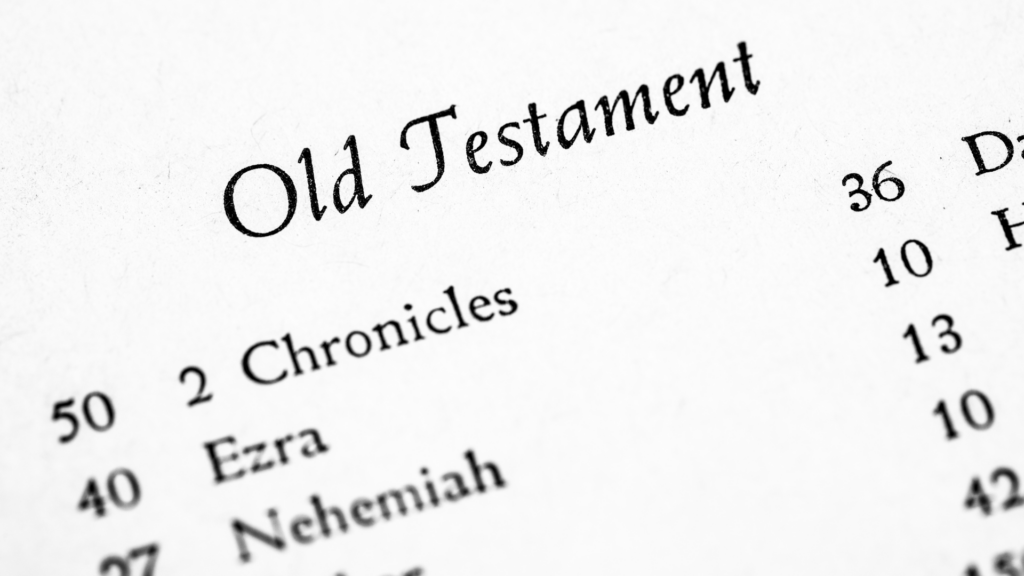
Revelation draws upon imagery and language from the Old Testament. For example, the portrayal of Jesus Christ as the Lamb of God who takes away the sin of the world (Revelation 5:6) echoes the imagery of the suffering servant in Isaiah 53:7.
Similarly, the depiction of the new Jerusalem descending from heaven as a bride adorned for her husband (Revelation 21:2) recalls the promises of restoration and renewal found in Isaiah 65:17 and 66:22.
Apocalyptic genre

The apocalyptic genre, characterized by visions of heavenly beings, cosmic battles, and divine judgments, is prevalent in both Revelation and other Old Testament books like Daniel, Ezekiel, and Zechariah.
The use of symbols like beasts, horns, and seals in Revelation mirrors the symbolic language used in these Old Testament passages, highlighting the continuity of prophetic themes across Scripture.
New Testament parallels
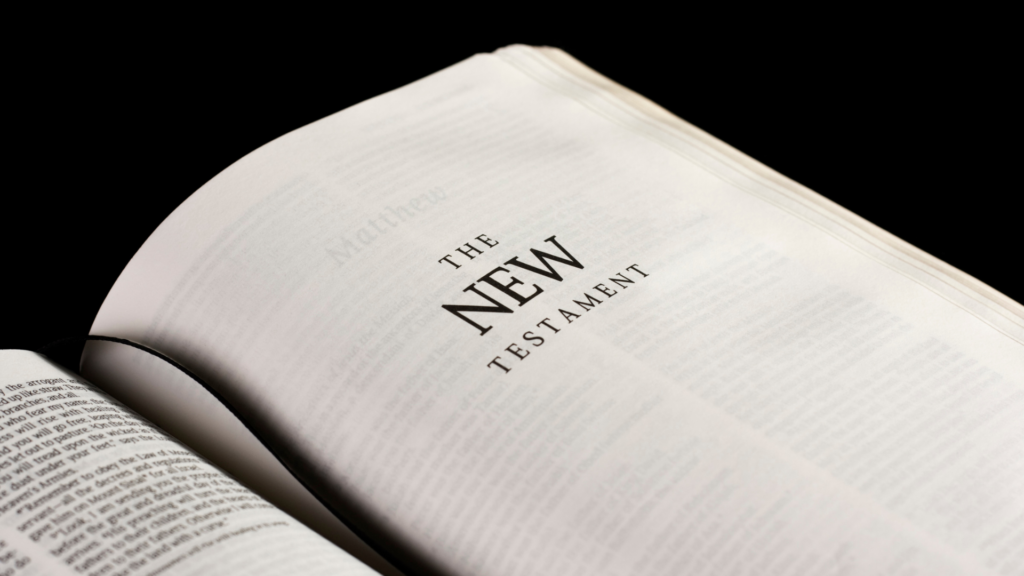
In the New Testament, Revelation is closely connected to the teachings of Jesus and the writings of the apostles, particularly concerning eschatological themes such as the coming of the Kingdom of God, the final judgment, and the return of Christ.
Jesus’ Olivet Discourse in Matthew 24-25 shares similarities with the visions of Revelation regarding the signs of the end times and the need for readiness and vigilance among believers.
Revelation Bible study guide: Exploring related themes

Throughout the Scripture, certain themes emerge repeatedly, helping you uncover the foundational truths that underpin the message of Revelation.
Redemption and victory in Christ
Revelation portrays Jesus Christ as the Lamb who was slain but now reigns victorious over sin and death.
This theme of redemption and victory in Christ finds its foundation in passages such as Isaiah 53, which prophesies the suffering and triumph of the Messiah, and Romans 8, which declares that nothing can separate us from the love of God in Christ Jesus.
These passages remind us of the sacrificial love of Christ and the assurance of victory we have through Him.
The Kingdom of God

Revelation depicts the establishment of God’s eternal Kingdom, where He reigns in righteousness and glory.
This theme of the Kingdom of God is woven throughout Scripture, from the prophecies of Daniel concerning the coming of the Messiah’s Kingdom to Jesus’ teachings on the Kingdom in the Gospels.
Passages such as Matthew 6:10, where Jesus teaches His disciples to pray for God’s Kingdom to come, underscore the centrality of God’s Kingdom in the Christian faith and its ultimate realization in Revelation.
Hope and restoration

Revelation offers a vision of hope and restoration, where God will make all things new and dwell with His people in perfect harmony.
This theme of hope and restoration echoes throughout Scripture, from the promises of restoration to Israel in the prophets to the vision of the new heaven and earth in Revelation.
Passages such as Jeremiah 29:11, where God promises plans for a future and hope, remind us of God’s faithfulness to His people and the fulfillment of His promises in Revelation.
Revelation Bible study guide: Addressing common misconceptions
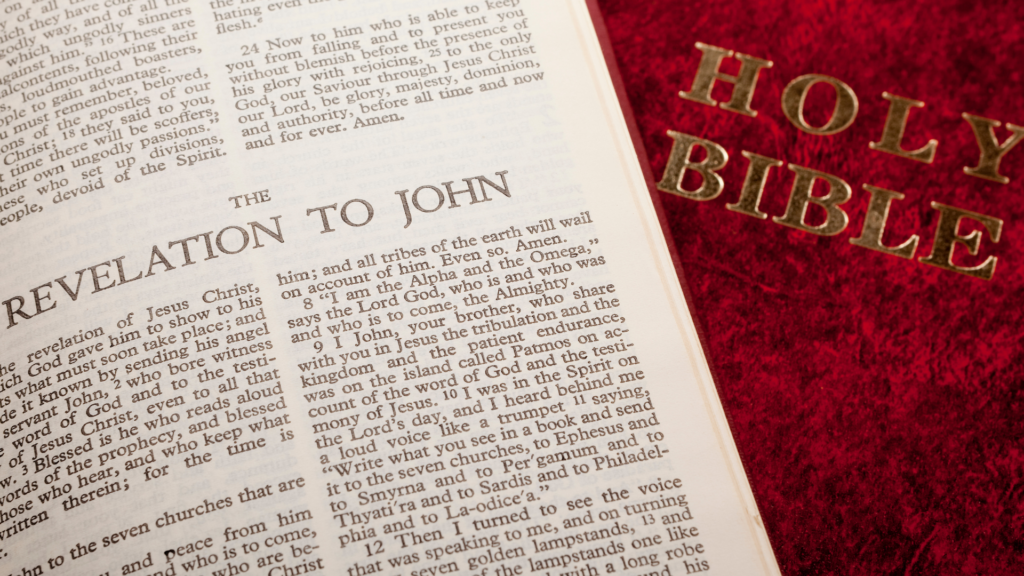
Misconceptions about the Book of Revelation can lead to confusion. I clarify the misinterpretations to help you uncover the true meaning of its message.
Revelation is a roadmap for predicting the end times
While Revelation contains apocalyptic imagery and prophetic elements, its purpose is to reveal the exalted Christ and His ultimate victory over evil, rather than providing a detailed timetable for future events.
Revelation is too mysterious and symbolic to understand
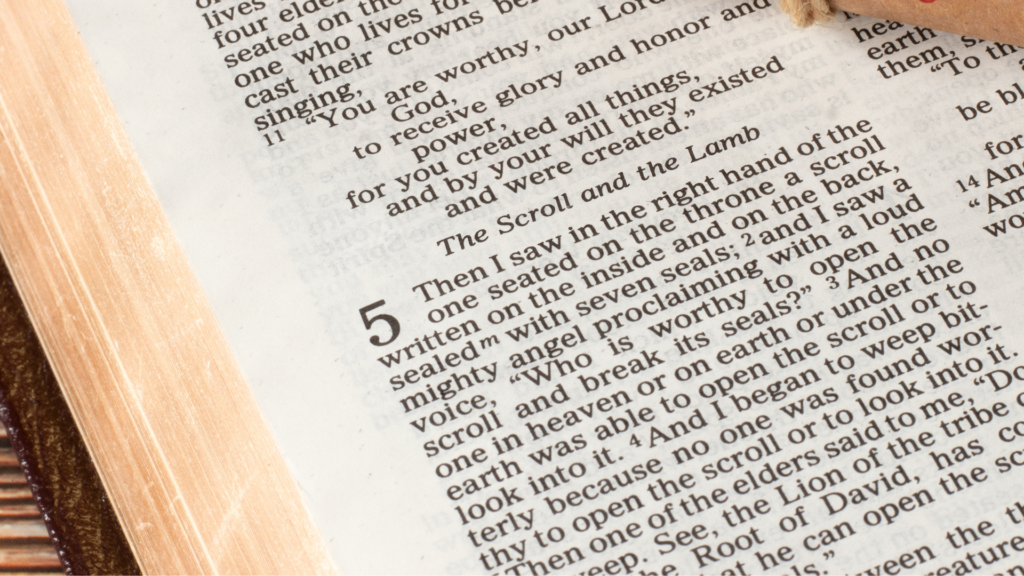
Although Revelation employs symbolism and imagery, its message can be understood with careful study and interpretation within the broader context of Scripture. Many symbols have clear meanings or are explained within the text itself.
Revelation is about doom and destruction
Revelation does depict judgment and tribulation. However, its overarching message is one of hope, victory, and redemption. It portrays the triumph of God’s Kingdom and the establishment of a new heaven and earth.
Revelation is irrelevant to modern-day Christians

Revelation addresses timeless themes such as persecution, faithfulness, and the sovereignty of God, making it highly relevant to believers facing challenges today. Its message of hope and encouragement offers assurance amid trials.
Revelation should only be interpreted literally
While some elements of Revelation can be interpreted literally, others are clearly symbolic or metaphorical.
A balanced approach considers the literary genre, historical context, and intended meaning of the text, allowing for a nuanced interpretation that respects its literary and theological complexities.
Revelation Bible study questions

These study questions encourage individual reflection and foster meaningful group discussions as you explore the profound teachings of Revelation.
Questions for individual reflection
Q1: What do you think is the main message or purpose of the Book of Revelation?
Q2: Reflect on a symbol or image from Revelation that resonates with you. What does it represent to you?
Q3: How does the sovereignty of God, as portrayed in Revelation, impact your understanding of His role in your life and the world?
Q4: Consider a time when you faced adversity or persecution. How does Revelation’s message of hope and victory influence your perspective on such challenges?
Q5: In what ways do you see the themes of redemption and victory in Christ reflected in your journey of faith?
Q6: Reflect on a passage or verse from Revelation that inspires you to worship God. What about it speaks to your heart?
Q7: How does the promise of the new heaven and earth in Revelation shape your perspective on the future and the hope of eternity?
Q8: Consider the letters to the seven churches in Revelation 2-3. Is there a particular message or warning that resonates with your spiritual journey?
Q9: Reflect on the role of prayer and worship in the visions of Revelation. How does prayer deepen your connection with God?
Q10: How can you apply the teachings and lessons from Revelation to your daily life as a disciple of Christ?
Revelation Bible study guide: Group discussion questions

Q1: How do you interpret the symbolism and imagery used in Revelation? Share examples of symbols that stand out to you and discuss their meanings.
Q2: How does Revelation’s portrayal of the end times impact your understanding of eschatology and the future of the Church?
Q3: Discuss the themes of judgment and salvation in Revelation. How do these themes intersect with our understanding of God’s justice and mercy?
Q4: Consider the role of suffering and persecution in the messages to the seven churches. How does Revelation challenge us to remain faithful amidst trials?
Q5: Explore the concept of spiritual warfare in Revelation. How do we engage in spiritual battle as believers, and what resources does Revelation offer for spiritual warfare?
Q6: Reflect on the significance of worship in Revelation. How does worship shape our relationship with God and prepare us for His Kingdom?
Q7: Discuss the importance of community and fellowship in the context of Revelation’s messages to the churches. How can we support and encourage one another in our faith journey?
Q8: Consider the tension between present realities and future hope in Revelation. How does the promise of God’s ultimate victory impact our lives today?
Q9: Reflect on the theme of repentance and renewal in Revelation. How does the call to repentance challenge us to examine our lives and attitudes?
Q10: How can we practically apply the teachings and messages of Revelation to our lives as individuals and as a community of believers?
Begin reading Revelation today
Dive into the Book of Revelation and explore its rich themes. Its messages of hope, victory, and redemption offer timeless truths that can deepen your faith in God. Consider checking out Bible studies of individual chapters to enhance your understanding of its teachings.

I’m a devoted follower of Christ on a journey to share the profound love, faith, and hope found in our Savior. Through my writings, I aim to inspire, uplift, and encourage fellow believers as we walk together in God’s light. Join me in exploring the beauty of faith and discovering the richness of a life rooted in Christ. Want to connect with me? Follow me on Facebook and YouTube.

